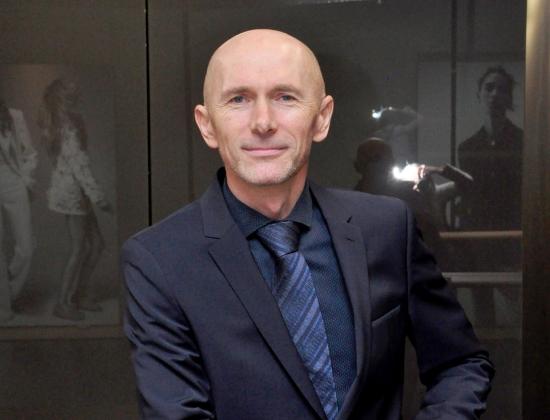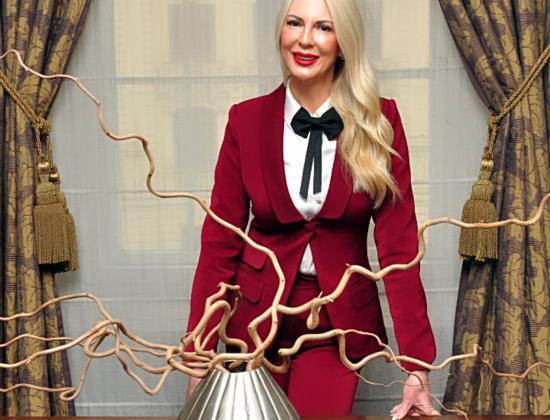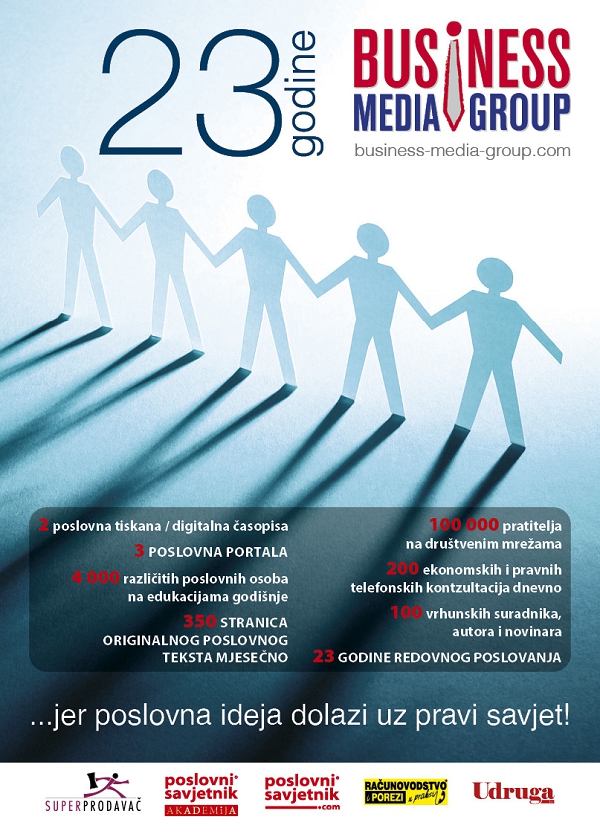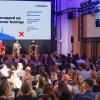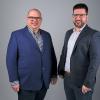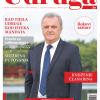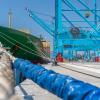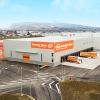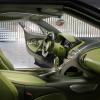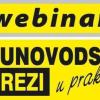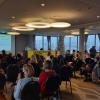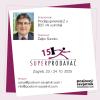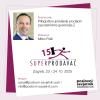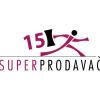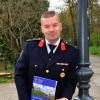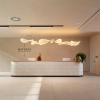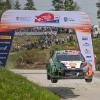John Lodder: How to develop an inspiring strategy for Metro with Appreciative Inquiry?
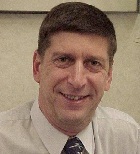
In two previous columns I gave a short overview of the basic ideas of Appreciative Inquiry (AI) and promised to give an example how this works in praxis. Metro Cash & Carry is the first company, as far as I know, that used an AI approach in Croatia.
Metro Cash & Carry is part of the Metro group (Germany),10 years in Croatia and became the largest wholesaler in Croatia with approximately 1200 employees and six locations throughout the country.
How did it begin?
The CEO wanted to develop a strategy for Metro toward 2020 and I asked him how effective and sustainable the results of the strategy process should be. Our discussion, that took some two months, was whether to use the common SWOT analysis and work from there on a “top-down business as usual” process or would he have the courage to involve all stakeholders, internal from all levels, and external ones?
I suggested using Appreciative Inquiry as more effective approach and he started reading books and articles and searching the Internet about AI.
Upon his proposal, the Board approved to the strategy process based on Appreciative Inquiry and an Internal Project Leader, as a person I had to cooperate with very closely, was appointed.
Our Project Outline and Plan
The Internal Project Leader (IPL) was also introduced into AI and we had a few meetings to make a detailed project plan for the Board. We started with adjusting the companies’ Mission and Vision Statement in a language everybody would understand and we formulated it in a challenging way.
From the Mission we created a few ‘Affirmative Topics’ (see previous column), out of which the Board had to choose three. Besides, we made a concrete planning of activities till the end of November 2011, which the Board also had to approve.
The importance is that the top commits itself to a concrete goal and to a frame work in which the goal should be achieved. From there, in the strategy development process, ‘all voices are equal’ till we reach the final decision-making phase.
The Kick-Off: I have a dream
The Board approved and we had the Kick-Off meeting beginning of September. It was an introduction of the project ‘Moj Metro Dream 2020’ to all internal stakeholders by the CEO, supported by the Abba-song ‘I have a dream’. Present were some 60 people; Board members, managers, employees from all levels and from all locations in Croatia, as well as representatives of the Trade Union. We introduced Appreciative Inquiry, the three Affirmative Topics and the different steps of the project plan.
Metro also spread a special issue of ‘Moj Metro’, the monthly internal magazine, including names and contact info of the interviewers, to communicate and inform all employees about this project,
The first reactions of the people were very positive but also a bit hesitating; main questions they had were about ‘would it be possible to see everything so positive?’ and ‘would it be possible to achieve results in this way with so many people and in our culture?’ Note: Appreciative Inquiry, like every strength based approach, is not about denying the ‘negative’ but merely to primarily focus on what is going well and good, what are the best things to take along with us in the change process.
The three Affirmative Topics
Shortly put, the three affirmative topics we started to work with are:
Shared Ownership, our employees have a high sense of belonging to our company
Being the Innovation Leader in our market
Offering a Unique Buying Experience for our Customers
The interviews
Based on specific criteria we selected 24 employees from all locations, to conduct interviews with employees (100), customers (60) and suppliers (10) of the company. The interviewers were trained in two groups to conduct these interviews in an AI-way, using a specific designed interview questionnaire based on the three Affirmative Topics.
Metro Customers and Suppliers were chosen and asked for their cooperation. All employees were informed in local meetings and had the possibility to be interviewed by calling/mailing one of the interviewers. The interviewers ended up with 120 employee, 60 customer and 10 supplier interviews.
The interviewers made reports of every interview, which were summarised for the 2 day summit we would organise in November.
Before starting the preparations for the November summit we had an evaluation day with all 24 interviewers. The goal of this day was to reflect on their experiences and to check the summarised reports, to adjust and/or add information to be sure we would work with valid data as input.
The interview results
If a marketing bureau would do this type of research it would deliver a report filled with statistic data, cold numbers and you would pay some 60.000 euro for it. For Metro it took, except travel expenses, ca. 500 hours of internal time.
But now, all together, we received the experiences, visions and viewpoints of almost 200 people about their ideas for the future of Metro. And these are not only personalised results but also meaning making information and in-depth, vivid research data.
Even more crucial is that simultaneously a process started in which the interviewed people felt important because their opinion was valued! This made them feel deeper involved and committed to the results as they felt responsibility for the input they gave and they were eager to cooperate on the realisation of their ideas. People feel like being a part in co-creating a change process.
The interviewers conducted ca. 10 interviews each and for them it was a new experience to gather so much information in a structured, but especially personal way. They gathered knowledge about wishes and desires for a future as their colleagues, customers and suppliers see it, The effect was that it made the interviewers feel being change-agents.
For each of the interview target groups the summarised results were divided into 2 categories:
- Immaterial answers referring to non tangible aspects (like behaviour, attitude, cooepration processes, atmosphere, communication, etc.)
- Material answers referring to tangible aspects (like structure, business processes, money, assortment, marketing etc.)
The results were further divided in positive and negative answers; in our approach we called the negative answers ‘wishes for the future’ that should be seen as opportunities for improvement.
The November Summit
We had two days with approximately 60 people, including members of the board and Managers, representatives of the Trade union, the interviewers and employees from all locations and all levels. For about 80% this was the same group that was present during the Kick-Off. During the two days we followed the 4D cycle of Appreciative Inquiry and divided the participants in subgroups which we named ‘Innovation Teams’. In total every innovation team had to fulfil 12 group assignments.
After finishing every task each group has 3-5 minutes to present their results to all other participants. After these presentations every team has the possibility to adjust their own results with something they heard or thought off during this plenary exchange. We used different formats for these plenary exchanges.
The Discovery phase started with interviews in pairs using the same questionnaire and affirmative topics as used before by the interview team. The difficult task for the participants then was to integrate all experiences, visions and ideas from the earlier interviews with their own experiences, visions and ideas. They managed this process superbly and came up with great visions and ideas for Metro 2020.
Note that all these results are based on the best experiences they had in the (recent) past. This means that they are certain that whatever comes out further in this process is realistic and doable, simply because they have done it before.
In the Dream phase every innovation team had assignments to end up with creating a Dream statement, their vision of how Metro would look like in 2020. With the credo: ‘nothing is impossible’ this turned out into a funny and very creative afternoon, without blockades or limitations.
The final assignment for this day was to prepare a 5 minute creative presentation of their dream; we would start day 2 with these presentations.
2 different examples of creative expressions of the ‘Metro Dream 2020’:
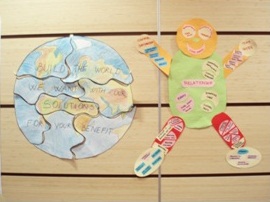

In this phase you could see a process was developing, where colleagues are in-depth talking, exchanging and dialoguing with each other; everybody was listening and giving input.
In AI terms the process of cooperation and co-creating really started here.
Also noticeable was a nice kind of competition between the groups, every group was trying to be better than the other, which positively influenced the quality of their results.
We closed the day at 5 pm and it was interesting to see that every team worked further on their presentation ‘in their own time’, some till 18.30.
The second day we started with the creative presentations of the dreams for ‘Metro 2020’. We saw role-plays and watched ‘movies’, ‘2020 TV interviews’ etc. Some teams were dressed in uniforms and some made beautiful pieces of art using the available materials.
The goal of these creative presentations is to have fun; more important however is the psychological meaning that it is a personal and group internalisation of the desired future they co-created.
Going from the Dream phase to the Design phase is always a bit difficult process because people have to get back with their feet on the ground and that requires a soft landing.
The teams managed this very well and started with high levels of enthusiasm and energy working on their assignments of this phase. Tasks were mainly directed to co-create so called ‘high-potential possibility maps’, to develop and grow concretely toward their dream/goal for 2020. It contains all necessary organisational design elements which they have to prioritise at three levels of importance.
After checking and reviewing the results, and after sharpening them into so called ‘provocative propositions’ we ended this phase.
Provocative Propositions are a specific kind of vision statements which should stretch the status quo, challenge common routines and that offer new possibilities for positive change. After formulating they are checked out by a set of 6-8 critical questions and every team has to agree upon everything stated.
This means actually concrete practising ‘shared ownership’ for the common results.
Finally, in the Delivery phase, we work on an innovative planning program. In a structured way the Innovation Teams think of concrete, short and long term activities that are necessary to realise their common goal. Every team gives their projects priorities with implementation dates, name a person who takes the ownership for each project and names of who should support and/or also be involved, like certain specialists for instance. The result is a large number of lists with a larger number of activities and priorities produced by every team.
The second day ends with a last, very important, but very difficult, plenary assignment.
All participants now become partners in a dynamic plenary process of decision-making with the goal to: ‘co-create one project planning list out of the five team productions’ and ‘everybody has to agree on the common end result’.
The Summit result
A concrete, hard result is one list with ca. 80 projects that everyone agrees upon. The activities are summarised under terms as Strategy, Management Style, Decision-making process, Marketing, Human Resource, ICT and other. And this result is based on the ideas and visions of more than 200 people including 15% of all Metro employees.
As a soft, but in reality a much harder result as the above mentioned, is an enormous feeling of spirit, involvement and commitment to the results they co-created in 2 days. They developed a great team work, a strong desire for deeper communication and cooperation, a positive believe in development, growth, and expansion for the company and for themselves. Finally, and above all, people have the confidence that this is all realistic in the spirit ‘we can do it, YES we can’ as many put it.
How to continue and how to make this sustainable?
Directly after the summit we worked out all the results and we made a clear summary of all projects. We sent it to all participants with the question to check and adjust if necessary.
In the first week of December we will have the responses and it will then be proposed to the Board for a final decision-making. Decisions and next steps will be communicated to all people in a special issue of ‘Moj Metro Dream 2020’.
John Lodder


